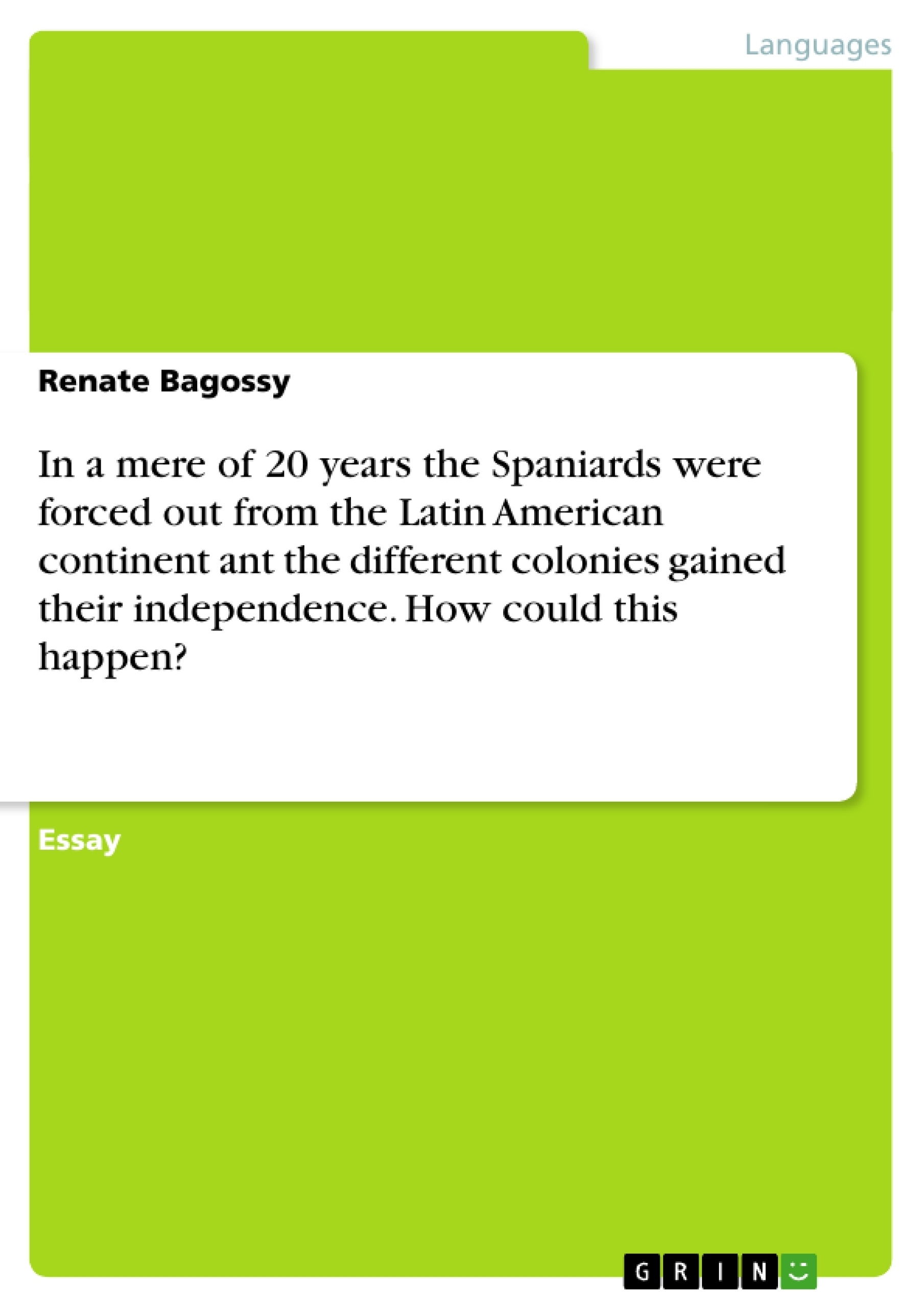There were several reasons which caused the independence movement of the Latin American colonies. There was not only one reason but a whole development over decades and even centuries which led to the independent struggles. Therefore it would not be correct to start the explanation with the rebellions at the beginning of the nineteenth century but we must go back in history a great deal to find out about the backgrounds, about the reasons, why there was such a dissatisfaction, such an unhappiness in the Latin American population. There was a shutter reason but a lot of more or less small factors also played an important role. The mixture of the races led to the development of the mestizos, mulatos and zambos. The Spaniards who were born in the New World, the Creoles, were also seen as something different form Spaniards. There was constant tension between Spaniards and people who were born on the American continent. In fact the whole Spanish administration was undermined from the beginning, as the Creoles were not allowed to take part in it. The weakening of the Spanish Kings and the motherland in general also played an important role. ”The American and French revolution in the late 1700s helped to ignite a revolt against European colonial powers.”1 And finally the fact that at the beginning of the nineteenth century two different people (Joseph Bonaparte and Ferdinand VII) seemed to gave orders to the administration of the motherland and the colonies, which caused confusion and disagreement in South America. So the reaction on the restorment of Ferdinand as absolute monarch was not the only reason for the final rebellions at the beginning of the nineteenth century, but there were a lot of earlier tensions which by this time came to a high point.
Inhaltsverzeichnis (Table of Contents)
- The Independence Movement of the Latin American Colonies
- The Spanish Administration
- The Creole Population
Zielsetzung und Themenschwerpunkte (Objectives and Key Themes)
This text examines the factors leading to the independence movement of the Latin American colonies from Spanish rule in the early 19th century. It delves into the complex historical context that fueled this significant event.
- The development of the Creole population and their discontent with Spanish rule
- The impact of the American and French revolutions on colonial sentiment
- The rigid structure of Spanish colonial administration and its limitations
- The influence of racial mixing and the emergence of new social identities
- The importance of national identity and the concept of "patria" in shaping the independence movement
Zusammenfassung der Kapitel (Chapter Summaries)
- The Independence Movement of the Latin American Colonies: This chapter outlines the key factors that contributed to the independence movement, including the growth of Creole identity and the influence of Enlightenment ideas. The chapter highlights the culmination of tensions between Spanish and Creole populations and the role of historical events like the American and French Revolutions.
- The Spanish Administration: This chapter explores the intricate and hierarchical structure of Spanish colonial administration, focusing on the system of viceroyalties, audiencias, and provinces. It delves into the roles and responsibilities of key administrative figures like the Viceroy and the oidores.
- The Creole Population: This chapter examines the emergence of the Creole population and their experiences within the Spanish colonial system. It discusses the social and economic realities of Creoles, highlighting the tensions between their growing wealth and their limited political power. The chapter also explores the evolving concept of national identity and the distinction between "nacion" and "patria."
Schlüsselwörter (Keywords)
This text focuses on the themes of colonial administration, Creole identity, racial mixing, national identity, and the independence movements in Latin America. It examines the historical context and the factors that led to the eventual liberation of the Latin American colonies.
- Quote paper
- Renate Bagossy (Author), 2002, In a mere of 20 years the Spaniards were forced out from the Latin American continent ant the different colonies gained their independence. How could this happen?, Munich, GRIN Verlag, https://www.grin.com/document/26384



